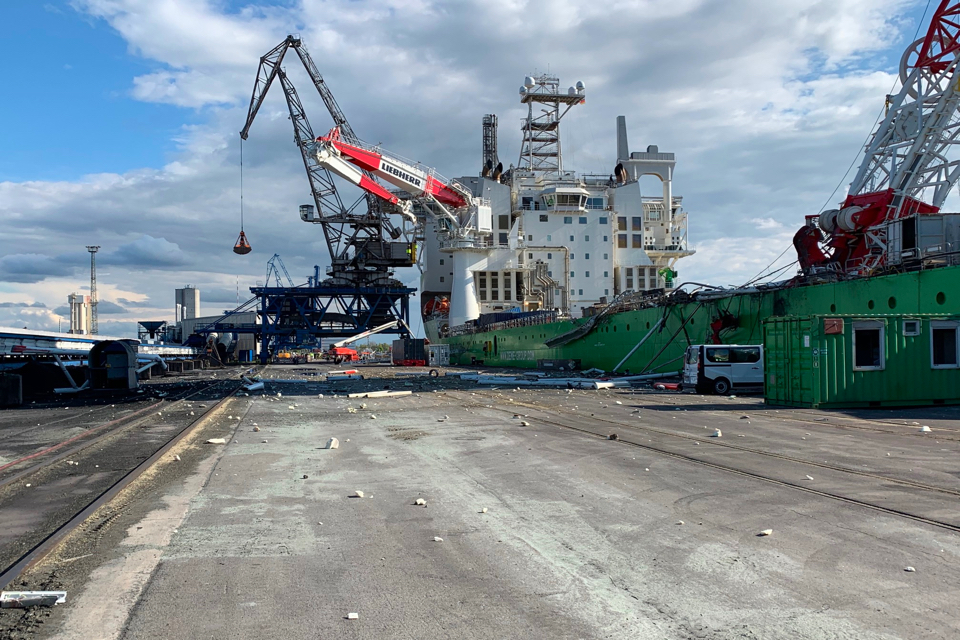The dramatic collapse of the 5000-tonne Liebherr crane on the new installation vessel of DEME in Rostock means that at least one client responsible for the construction of a wind farm has a problem. Probably more will follow.
On paper, the Orion 1 had everything to become a game changer in the construction of offshore wind farms. With the spectacular design, DEME is moving away from the traditional jack-up concept, in which the installation vessels jack themselves up along extendable legs far above sea level. The increase in scale of wind turbines with a tip height of more than 250 metres would place such extreme demands on new vessels that, according to the company, they would no longer be safe and profitable to operate.
So the contractor opted for a ship that would install tens of tonnes of heavy turbine housings at a height of more than a hundred metres from sea level using an enormous crane. In addition, the ship would be kept stable and in place by a highly advanced dynamic positioning system. The ship was built in China and has been moored for six months at the quay of crane builder Liebherr for the installation of its largest offshore crane to date.
Scotland
That process was almost completed and by the end of this month the Orion 1 should have left for Scotland for its first job: the placement of 103 jackets for the Moray East wind farm in Scotland. This is being developed by EDP Renewables and Engie on behalf of the Scottish government. Clearly, they have to look for another way to get the job done. It seems out of the question that the ship will be launched this summer season. In the longer term, other projects are likely to be compromised as well.
DEME is working on a solution for the projects that were to be carried out by the Orion 1, but since the ship was to already start work this month, the deadline is tight. ‘We are currently searching for a new vessel to install the jackets,’ said spokesperson Vicky Cosemans. ‘This could be one of our own vessels or a vessel chartered from another company.’
The accident was caused by a malfunctioning crane hook designed by Ropeblock from the Netherlands. The reason for its malfunctioning is still being investigated. A total of twelve people were injured in the accident and two of them had to be taken to hospital for treatment.
This article is based on an article published (in Dutch) on Nieuwsblad Transport, which is also published by SWZ|Maritime’s publishing partner Promedia.
Picture by Rostock Port GmbH.








